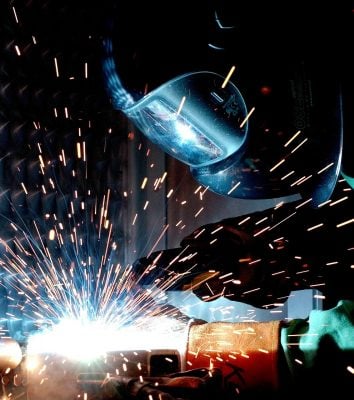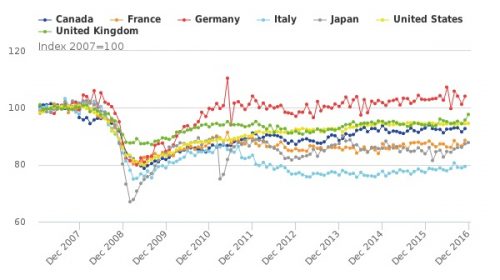The UK manufacturing sector ended 2016 on a strong note, with growth recorded in November and December, despite concerns that the uncertainty following the Brexit vote might hold it back.
The February 2017 figures from the Office for National Statistics (ONS) “confirm economic activity continued to expand at the end of 2016.”
 UK manufacturing grew 2.1 percent in December 2016 says the ONS. Image: pixabay-67640
UK manufacturing grew 2.1 percent in December 2016 says the ONS. Image: pixabay-67640
The ONS says strong growth in manufacturing caused production output to rise for the second consecutive month in December.
Production output rose by a further 1.1 percent in December 2016, while manufacturing also increased by 2.1 percent.
However, the government office warns that the growth in UK manufacturing at the end of 2016 is driven by a “strong month for often volatile pharmaceuticals.”
UK manufacturing ‘compares favourably’ across G7
The ONS figures also show that the UK manufacturing position at the end of 2016 ‘compares favourably’ across the G7 economies.
The G7 nations – Canada, France, Germany, Italy, Japan, United States, and United Kingdom – represent around half of global economic output.
Of the G7 economies, Germany is the only one that has ended 2016 with manufacturing output higher than it was in 2007, before the economic downturn of 2008.
Apart from the U.K., the other G7 economies ended 2016 between 5.5 percent (the U.S.) and 20.6 percent (Italy) below their 2007 manufacturing output levels.
However, because of the rise in December, “UK manufacturing output is now only 2.3 percent below levels seen in 2007,” says the ONS.
 Because of the rise in December 2016, the UK manufacturing position at the end of 2016 ‘compares favourably’ across the G7 economies. Graph: ONS
Because of the rise in December 2016, the UK manufacturing position at the end of 2016 ‘compares favourably’ across the G7 economies. Graph: ONS
Brexit not denting UK business optimism?
Meanwhile, new business trend figures published by accountants and business advisers BDO LLP show manufacturing confidence has reached a 20-month high, suggesting that the “Brexit and Trump effect has not dented UK business optimism.”
Another recent report also found that UK car manufacturing output reached a 17-year high in 2016.
The Bank of England has also uprated its forecast for UK growth – again. In its February 2017 inflation report, the BoE says its Monetary Policy Committee “has increased its central expectation for growth in 2017 to 2.0 percent and expects growth of 1.6 percent in 2018 and 1.7 percent in 2019.”
Rise in construction output
The ONS figures also show that construction output rose by 0.4 percent in November and 1.8 percent in December.
The ONS says the growth in December was mostly driven by private commercial work and brings the volume of output of the sector to just above the December 2015 level.
Overall, construction output grew by 1.5 percent in 2016, not as strong as in 2014 and 2015.

